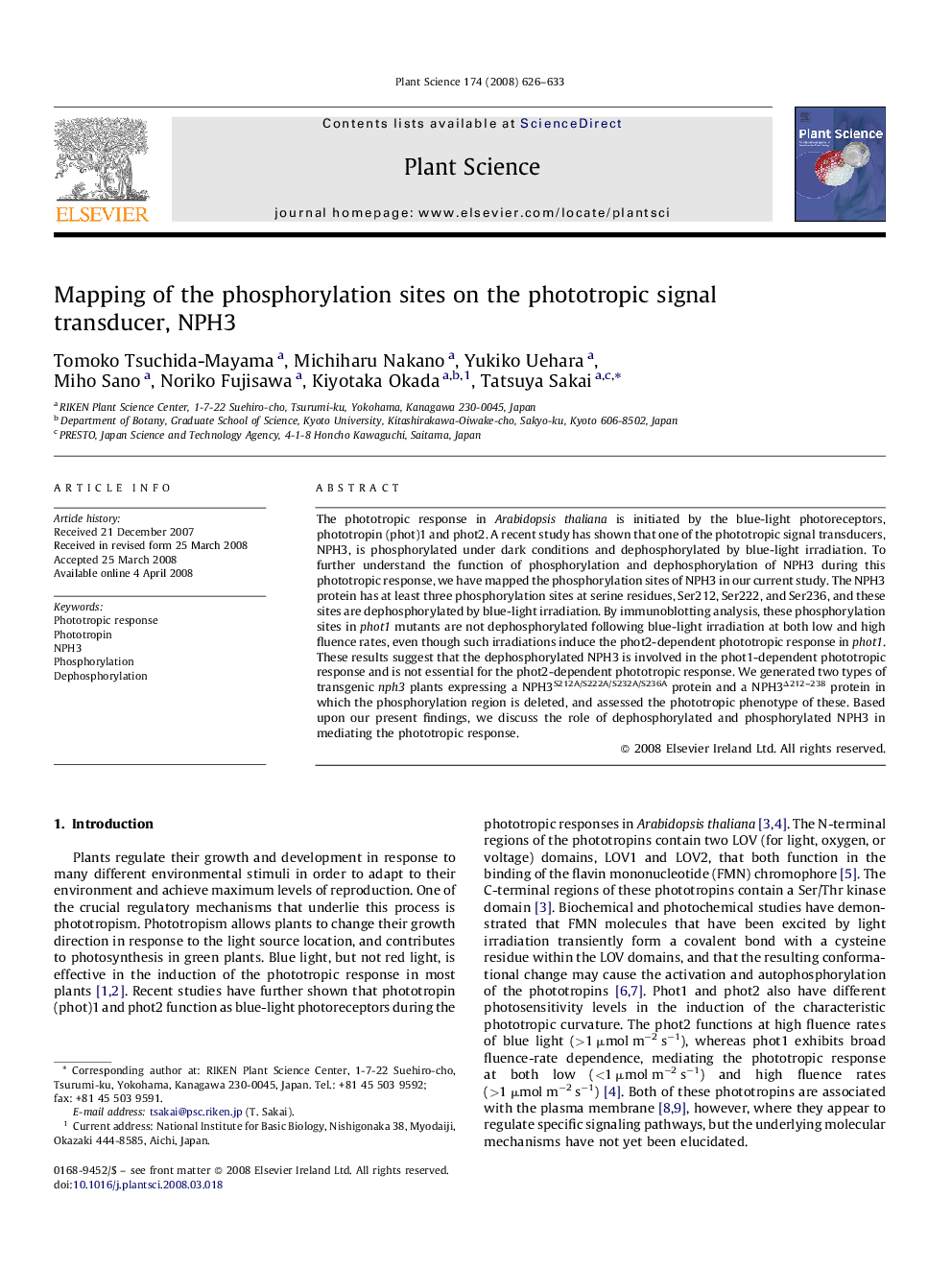| Article ID | Journal | Published Year | Pages | File Type |
|---|---|---|---|---|
| 2018293 | Plant Science | 2008 | 8 Pages |
The phototropic response in Arabidopsis thaliana is initiated by the blue-light photoreceptors, phototropin (phot)1 and phot2. A recent study has shown that one of the phototropic signal transducers, NPH3, is phosphorylated under dark conditions and dephosphorylated by blue-light irradiation. To further understand the function of phosphorylation and dephosphorylation of NPH3 during this phototropic response, we have mapped the phosphorylation sites of NPH3 in our current study. The NPH3 protein has at least three phosphorylation sites at serine residues, Ser212, Ser222, and Ser236, and these sites are dephosphorylated by blue-light irradiation. By immunoblotting analysis, these phosphorylation sites in phot1 mutants are not dephosphorylated following blue-light irradiation at both low and high fluence rates, even though such irradiations induce the phot2-dependent phototropic response in phot1. These results suggest that the dephosphorylated NPH3 is involved in the phot1-dependent phototropic response and is not essential for the phot2-dependent phototropic response. We generated two types of transgenic nph3 plants expressing a NPH3S212A/S222A/S232A/S236A protein and a NPH3Δ212–238 protein in which the phosphorylation region is deleted, and assessed the phototropic phenotype of these. Based upon our present findings, we discuss the role of dephosphorylated and phosphorylated NPH3 in mediating the phototropic response.
